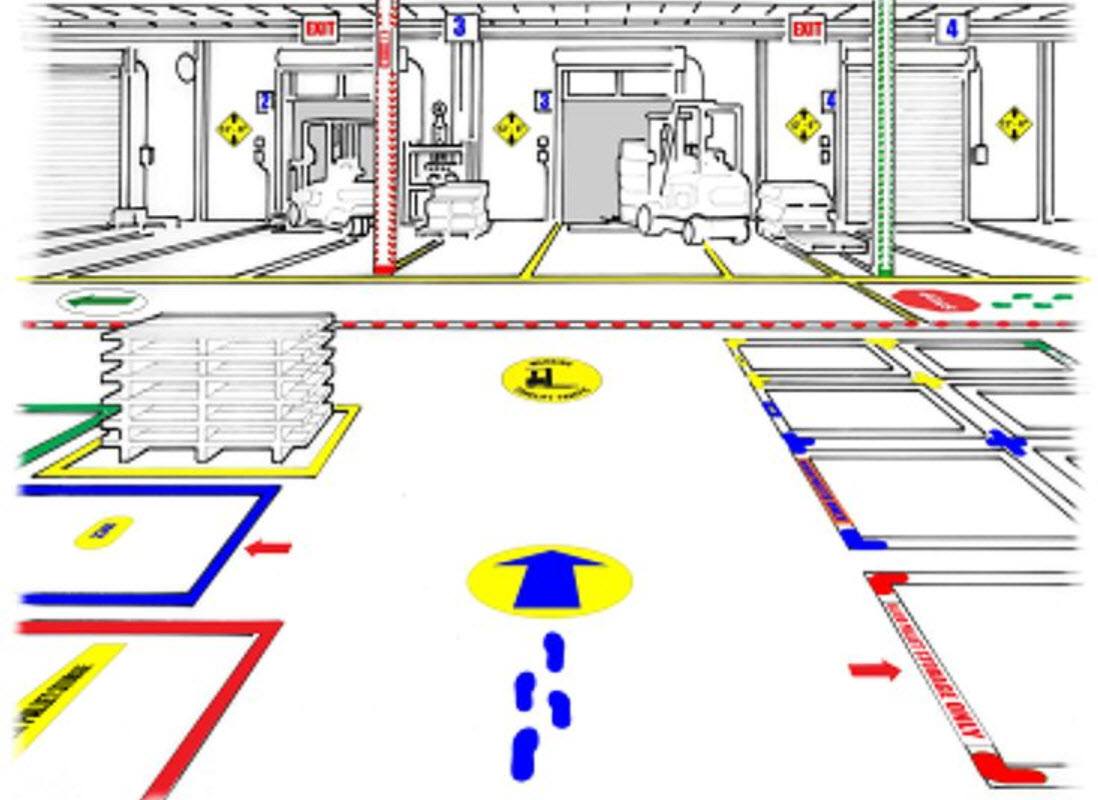The term “visual factory techniques” is a concept of lean manufacturing processes founded on visual information all over the working place of a business entity. It employs a coordination of communication tools for information sharing at the time and place it is considered necessary. Through visual controls it is probable to communicate without words and distribute information without any sort of disruption. Visual tools are also helpful for increasing productivity as the employees get the required information, where and when needed by them.
The initial point of visual factory techniques is establishing what information needs to be communicated. In order to settle on what information must be conveyed the current status must be weighed against the goals of future arrangement. The information necessary to get from one position to a new is what must be transmitted. The way in which the information has to be passed on is based on the most desired outcome. The locality and means of information deliverance relies on the relevancy of the information as well.
Implementation of Visual Factory Techniques
When it comes to the implementation of visual management and controls a number of things must be considered, as What do I need to know?, What do I need to share?, and What questions am I frequently asked? When we reflect on these issues we need to think about the perspective of team member by putting ourselves in their shoes. If we’re looking at production metrics than it must be assured that we are considering those questions from their point of view. For any lean implementation each factor must be approached on trial basis. In all areas two or three visual controls must tried so it can be confirmed how well we have prepared, communicated their objective to the team members, and keep an eye on how sound they are followed. If the controls are being disregarded and not exercised, then either the organization hasn’t conveyed their purpose clearly as much as necessary, or hasn’t prepared them easy enough to turn into a part of their daily responsibilities. For proper implementation the basic challenge is to acquire the right balance.
5S
As a measure of continuous improvement or lean manufacturing processes a lot of manufacturing services have picked to follow the route towards a workplace organizational and housekeeping approach of “5S”. By maintaining a systematic workplace and with visual signs in order to accomplish more reliable operational outcomes, 5S is a methodology to decrease waste and boost productivity through visual factory techniques. There are five steps in this approach including Sort, Set in Order, Shine, Standardize, and Sustain that are also occasionally recognized as the 5 pillars of a visual place of work. This system is a simple and common method that works in businesses all around the globe.
The first pillar of 5S is “Sort” in which each and every item not required for current production operations is removed. This pillar refers to the approach that leaves the basic essentials only and if there is any uncertainty than it must be discarded. This pillar is quite helpful in managing space, money, time, energy, and other resources as well as their utilization in an effective manner.
The second pillar is “Set in order” where all needed items are organized so that they can be used in an easy way. Each and every item is labeled so in that way anyone can find it or clear it up. This pillar is helpful in removing various types of waste consisting of searching waste, waste caused by trouble in using items, and waste because of trouble in returning items.
The third pillar is “Shine” in which the main focus is on keeping everything neat and clean on daily basis. It is quite handy approach to make the work place into a hygienic, positive and clean place where everyone can work with peace of mind.
The fourth pillar is “Standardize” which focuses on embracing the first three pillars into a combined whole by observing their implementation.
Last but not the least; the fifth pillar is “Sustain” in which the main point is to appropriately maintain right practices by making them a habit. This pillar helps in imparting a sense of discipline by avoiding from going back to the old ways.






